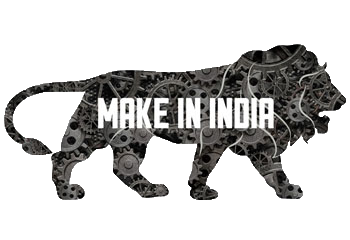Hydraulic pullers, which are also known as hydraulic extractors, find wide use in different sectors like automotive, manufacturing and the maintenance of heavy machinery. These tools have been created to take out components that fit very tightly such as bearings, gears and pulleys with great strength and accuracy.
In this blog we will look at how a hydraulic puller works – its different parts and what they do; where it can be used for removing objects; and the necessary safety measures needed when using one of these devices effectively.
Working Principle of Hydraulic Pullers
In the center of a hydraulic puller is the working method of hydraulic pressure. A system with three main parts – an oil pressure cylinder, pump and jaws or arms – forms this model. When we turn on the machine, it starts creating oil pressure by activating its pump. The generated hydraulic force gets sent through fluid into our cylinder for producing strength. The pressure makes the cylinder grow longer, creating a controlled and strong pulling strength on the part that is taken off.
The main benefit of hydraulic pullers, compared to mechanical ones, is their capacity to create strong force while requiring less human strength. This characteristic makes them perfect for taking out tough or rusted parts that might not respond well to other methods of removal.
In the hydraulic system, a pressure relief valve is usually present. This valve stops overloading from happening and assures safety of both tool as well as components being worked on (such as gears or bearings). Moreover, numerous recent hydraulic pullers possess pressure gauges – such devices enable precise monitoring and control of applied force by operators.
Also, Read: Different Types of Pullers and Key Features to Consider
Usage of Hydraulic Pullers
Hydraulic pullers have various uses in many industries and scenarios. For example, when doing automotive repair work they are generally applied to remove wheel bearings, steering wheels and other parts that fit tightly together. In industrious environments, hydraulic pullers play a crucial role for keeping up with maintenance or fixing large machines by taking out big gears along with pulleys as well as shaft couplings often found inside them.
Versatility is a key benefit of hydraulic pullers. Many models can change their jaws or arms, making them flexible for various sizes and shapes of components. This feature makes it useful in general maintenance workshops where they could be used for different jobs.
For a hydraulic puller, the person using it places the jaws or arms around the part that needs to come out. They must make sure this tool is centered and its jaws have good hold on things. When properly set up, they start the hydraulic pump which slowly boosts pressure and pulling power. The process is typically slow and controlled, allowing for adjustments if necessary.
Sometimes, you can add heat to the material around it to help in taking out a component. This method is more useful when dealing with parts that were put for longer time. Still, you should be cautious about not causing harm to the part that needs removing or its nearby components.
For situations where there is not much space, hydraulic pullers can be very helpful because they can produce a lot of power but don’t need much room to work. This quality makes these devices very important in small engine compartments or crowded industrial machines.
Precautions When Using Hydraulic Pullers
Even though hydraulic pullers are strong and helpful instruments, they need to be used with attention towards safety and gentle handling. Here are some main precautions:
- Proper Equipment Selection: Make sure to select a hydraulic puller that matches the job’s capacity needs. If you use one which is not strong enough, it might result in tool failure or harm the component being taken out.
- Inspection Before Use: Check the hydraulic puller before using it. Look for any signs of wear, damage or leaking hydraulic fluid. Give special attention to the hydraulic hoses and connections because they are very important for safe usage.
- Correct Positioning: Verify that the puller is properly aligned at the center of the part to be extracted. Wrong positioning might result in slipping or uneven distribution of force, possibly causing harm to either the tool or component being worked on.
- Gradual Pressure Application: Apply pressure slowly, giving the component some time to start moving. If you use sudden maximum force, it may cause tool or component failure.
- Use of Safety Equipment: Use proper personal protection equipment like gloves and safety glasses. There is a danger of items flying around or pressure getting released suddenly, which could lead to injury.
- Stable Work Surface: Make sure the work piece is firmly held and balanced. Unexpected movement while pulling can result in accidents or harm.
- Avoid Overloading: Watch the pressure gauge and never go beyond the highest safe limit of your puller’s capacity. If your component is not starting to move even with maximum safe pressure applied, re-evaluate the situation and think about other methods.
Also, Read: What are the Different Types of Pullers
Bottom Line
Pullers that use hydraulic power are very useful in multiple industries, providing an effective and regulated way to take out components that are fitted tightly. The method of how these pullers work, which is by using hydraulic pressure, lets them produce a lot of force with less effort from the hands. This feature makes them suitable for many kinds of uses such as fixing cars to working on big industrial machines.
With the ongoing progress of technology, it is likely that design for hydraulic puller will advance more. This might include elements such as digital pressure monitoring or automated safety systems. However, regardless of these possibilities, the basic rules of cautious operation and safety understanding will always be important for whoever uses this strong tool.

